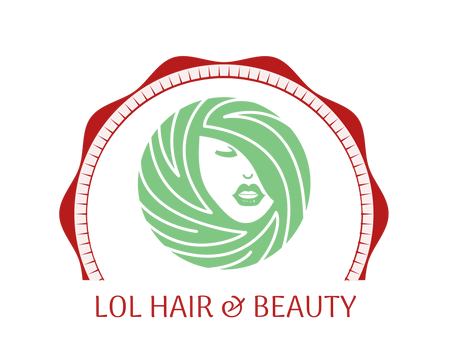Knowing Your Hair Porosity is Key Importance to Healthy Hair.
Products that may work for a certain Hair type might be damaging to others.
Porosity is how well your hair is able to absorb and hold moisture. It is affected by the flexible outer hair layer called the cuticle, which determines how easily moisture and oils pass in and out of your hair. For most, porosity is genetic, but it can also be affected by external factors such as exposure, heat treatments and chemical processing.
Knowing your hair's porosity can help you choose the right products to keep your hair well-moisturized, strong and shiny and healthy.
To know your hair porosity you can do a simple test.

Float Test to find our your hair porosity:
- Take some strands of hair from your brush or comb (be sure to use clean hair as products can alter the results) and drop them into a glass of water
- Let them sit for a few minutes, and if the strands float after the time is up, you likely have low porosity hair. If it sinks, the hair is likely to be high porosity
- If the hair floats somewhere in the middle of the glass, this would indicate medium porosity hair.
How to look after your hair once knowing your Porosity
Low porosity hair
Is a tightly bound cuticle layer, making it difficult for moisture to penetrate, and also difficult for moisture to escape once it has penetrated the hair. Low porosity hair is characterised by hair that takes a long time to dry, can be resistant to colouring and other chemical processes.
Low porosity hair can also be prone to product build-up, so use richer products sparingly, or opt for lighter products to keep the hair from becoming weighed down. Stay away from protein-rich deep conditioning products, which can leave it feeling stiff and straw-like. Stick to protein-free, daily conditioners with humectants such as glycerin or honey. Use moderate heat with protein-free deep conditioning treatments to help open up the tightly bound cuticle.
Cleansing with a sulfate free shampoo intermittently can also prevent low porosity hair from becoming weighed down, and help to open up the hair cuticle to allow moisture to penetrate more effectively.
Products to consider for low porosity hair:
- Products containing humectant properties (products that attract moisture) such as African Pride Moisture Miracle Strengthen & Protect 5 Essential Oils
- Moisturising products containing hydrating ingredients as well as hold to add texture to the hair such as Aunt Jackie's Butter Creme Intensive Moisture Sealant which is rich in moisture yet light weight
- Moisture Miracle Shampoo & Conditioner to help open up the tightly bound cuticle layer to remove build-up and allow moisture to penetrate the hair shaft
Low porosity hair requires moisturizers rich in emollients such as shea butter, jojoba oil, coconut oil and mineral oil. It also benefits from humectant products, which attract and hold moisture to your hair. Choose lighter, liquid-based products such as hair milks that won't sit on your hair and leave it oily or greasy.
Medium Porosity Hair
Has a looser cuticle layer, allowing for a steady but moderate flow of moisture in and out of the hair. Medium porosity hair generally copes well with styling, colouring and chemical processes, but be aware that frequent treatments can slowly increase the porosity of the hair, making it more difficult over time to maintain such treatments. Medium porosity hair has little to no difficulty absorbing or retaining moisture, and tends to be relatively healthy with minimal exposure to damage from UV, chemical or heat processing. Products that are balanced in moisture can help medium porosity hair remain healthy.- Aunt Jackie's Coco Wash Coconut Milk Conditioning Cleanser to gently clean, balance and hydrate the scalp and hair
- Deep condition periodically with a product that includes protein such as Aunt Jackie's Coco Repair Coconut Creme Deep Conditioner
- A hydrating leave in product such as Moisture Miracle Curling Cream to keep the hair moisturised
High Porosity Hair
Has gaps and openings in the cuticle layer which allow moisture to pass quickly in and out. This can sometimes lead to frizz and tangling in humid weather, and extreme dryness in dry weather. High porosity hair has difficulty retaining its moisture and tends to be more easily damaged as a result of UV exposure, heat styling and chemical processing. High Porosity Hair benefits from a lot of nourishment and moisture, so it is beneficial to use products rich in moisture with added protein to help give the hair shine, nourishment and lock in hydration.Even simple acts such as bathing, swimming and shampooing can create more damage and breakage due to the sheer amount of moisture highly porous hair can absorb.
Be sure to use anti-humectants in climates with high heat and humidity. This will help seal your damaged cuticles and prevent them from absorbing excess moisture in the air.
- Products containing anti-humectants such as Cantu Shea Butter Super Shine Silk hair will seal the hair cuticle and prevent them from absorbing too much moisture from the air which may lead to frizz
- Leave-in moisturisers such as Creme of Nature Argan Oil Creamy Oil Moisturizing Hair Lotion and Creme of Nature for Natural hair Curl activator creme or the Aunt Jackie's Seal it up Hydrating Sealing Butter
will keep the hair hydrated throughout the day and prevent dryness - A deep treatment containing protein as well as moisture to nourish, hydrate and repair the hair such as Original Root Stimulator Hair Mayonnaise Conditioning Treatment

